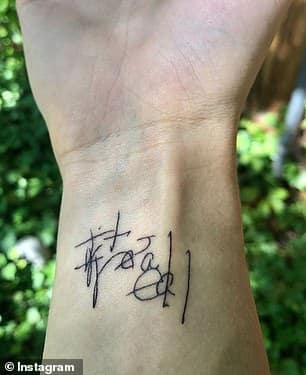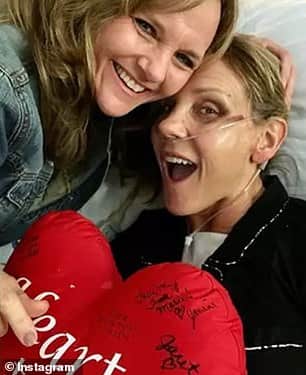In February, Tina and her husband, Brian, were preparing for a hike near their home in Phoenix, Arizona, when the unthinkable happened. Though she had always been in good health, Tina suddenly collapsed before they could set off.
Brian rushed to her side and began performing CPR as she turned dark purple. He managed to revive her briefly, only for her heart to stop again. He performed CPR multiple times until paramedics arrived and took over.

During the frantic ambulance ride and emergency treatment, Tina was resuscitated six times. For a total of 27 minutes, she was clinically “dead.”
Once at the hospital, Tina was intubated and unable to speak. But the moment she regained consciousness, she motioned for a pen and scribbled a barely legible message: “It’s real.”She later explained that she had caught a glimpse of heaven.
Describing her experience, Tina told AZFamily.com, “It was so real. The colors were so vibrant.” She recalled seeing a figure she believes was Jesus, standing in front of dark gates illuminated by a brilliant yellow light.
Unable to speak at the time, she simply nodded upward when her family asked what she meant by her message.

Tina considers herself incredibly lucky to be alive
Sudden cardiac arrest is often fatal outside of a hospital setting, with nearly 90% of cases proving deadly. Experts believe Brian’s quick CPR response made all the difference in saving her life.
Studies show that when CPR is performed by a bystander, survival rates can jump from 10% to over 45%. However, statistics reveal that women are 27% less likely to receive CPR from someone other than a paramedic.
What makes cardiac arrest particularly dangerous is its unpredictability. Even those without prior heart conditions—like Tina—can suffer an abrupt electrical failure that stops the heart instantly. Every year, this life-threatening condition affects over 356,000 people in the U.S. alone.
While most individuals who experience cardiac arrest have no memory of the event, research on near-death experiences (NDEs) suggests that 10-20% report vivid sensory or visual encounters.

Scientific studies continue to explore what happens in the brain when the heart stops
A 2013 University of Michigan study on rats revealed a surge of synchronized brain activity moments before death—suggesting the brain remains unexpectedly alert after cardiac arrest.
Some researchers speculate that these brain surges could explain near-death visions, especially those aligned with personal beliefs about the afterlife. However, definitive scientific proof remains elusive.
Regardless of scientific explanations, Tina and her family believe her message was unmistakable: heaven is real.
